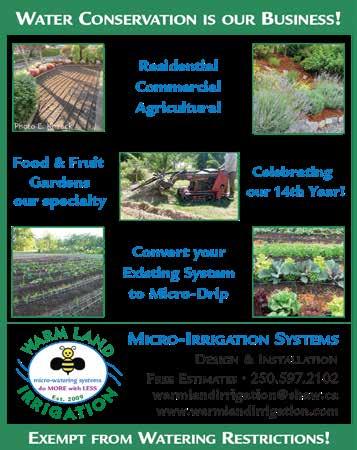
1 minute read
Who’s That in the Rivers?


Advertisement
Field Crew in Koksilah River. Photo by Chloe Mitchell, Cowichan Watershed Board
Field Crews Comb for Clues in Twinned Watersheds Study
From time immemorial, salmon have used the rivers of the Cowichan Valley to spawn, to overwinter as little eggs, to grow into strong little sea-going fry. But climate change isn’t just changing weather patterns and making life on land more difficult, it’s also changing our watersheds and endangering the lives of wild salmon and everything that depends on them.
Fish need water to survive. This sounds simple. What isn’t simple is knowing how little is too little; how much water is needed in each part of each river during each week of the year to support each of the salmon species.
This summer you may see fashionably wader-clad folks on our rivers. They will look a bit different than the usual tubers, paddlers and fishers. They are hard-working technicians from Cowichan Watershed Board, Cowichan Tribes, Halalt First Nation, and Khowutzun Forestry Services. Working together in the ChemainusKoksilah Twinned Watershed Salmon Sustainability Project, these fishy-friends will be using innovative and truly exciting science to understand how to make our salmon habitats more resilient in the face of climate change. These technicians will be observing how different water levels affect the various pool, riffle, and glide habitats that salmon need, gathering information about the roles of various plants on the riverbeds and shorelines and, taking population surveys of the fish themselves.
Another very important element of this program is understanding the history of these rivers when they were healthy. What plants thrived here? What were salmon populations like? Through interviews with Indigenous knowledge holders, the project team hopes to learn about how the watershed functioned when the people lived in reciprocity with the rivers.
To capture and share all of this excellent work, two roving reporters and a giant chinook salmon mascot will be interviewing everyone and posting these reports from the field, to help you be part of this unique program.
This summer look for the Chinook and the technicians. They have hope and so should all of us.
Nora Livingstone Cowichan Watershed Board’s O-fish-al Mascot Coordinator. www.CowichanWatershedBoard.ca










